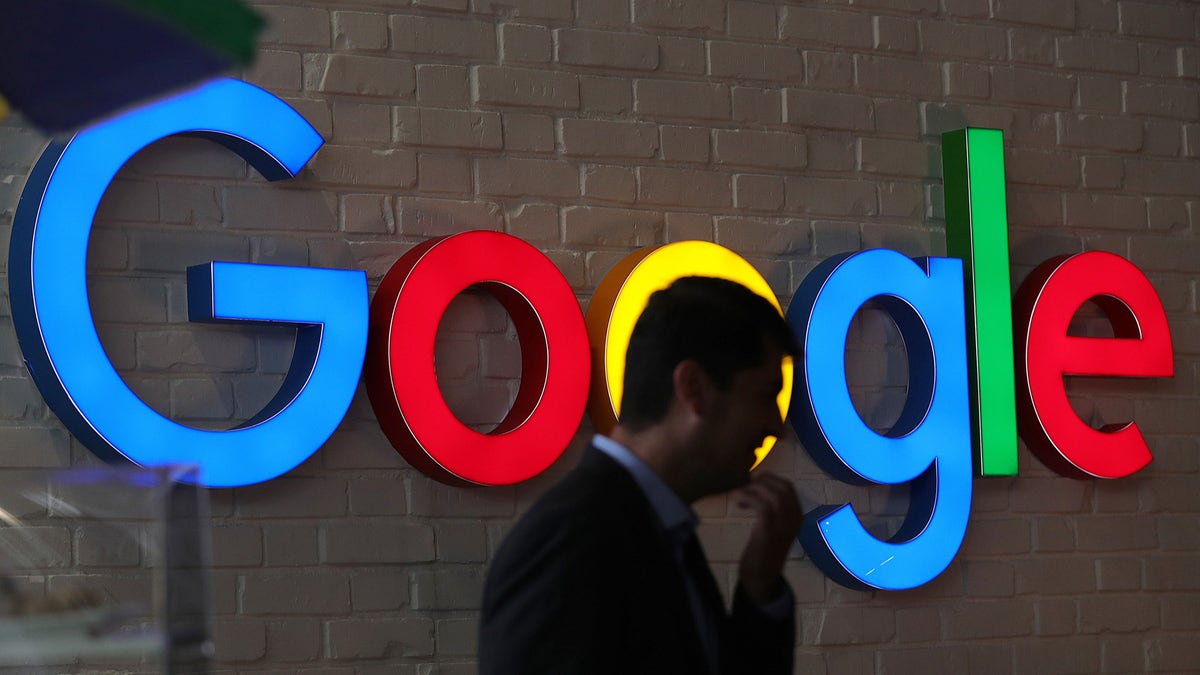
An illuminated Google Inc. logo sits on display at the company's exhibition stand during the Noah Technology Conference in Berlin, Germany, on Thursday, June 13, 2019. The annual tech conference runs June 13 -14 and brings together future-shaping executives and investors. Photographer: Krisztian Bocsi/Bloomberg via Getty Images
Google will soon offer checking accounts to consumers, becoming the latest Silicon Valley heavyweight to push into finance.
The project, code-named Cache, is expected to launch next year with accounts run by Citigroup Inc. and a credit union at Stanford University, a tiny lender in Google’s backyard.
Big tech companies see financial services as a way to get closer to users and glean valuable data. Apple Inc. introduced a credit card this summer. Amazon.com Inc. has talked to banks about offering checking accounts. Facebook Inc. is working on a digital currency it hopes will upend global payments.
Their ambitions could challenge incumbent financial-services firms, which fear losing their primacy and customers. They are also likely to stoke a reaction in Washington, where regulators are already investigating whether large technology companies have too much clout.
The tie-ups between banking and technology have sometimes been fraught. Apple irked its credit-card partner, Goldman Sachs Group Inc., by running ads that said the card was “designed by Apple, not a bank.” Major financial companies dropped out of Facebook’s crypto project after a regulatory backlash.
Google’s approach seems designed to make allies, rather than enemies, in both camps. The financial institutions’ brands, not Google’s, will be front-and-center on the accounts, an executive told The Wall Street Journal. And Google will leave the financial plumbing and compliance to the banks—activities it couldn’t do without a license anyway.
“Our approach is going to be to partner deeply with banks and the financial system,” Google executive Caesar Sengupta said in an interview. “It may be the slightly longer path, but it’s more sustainable.”
Google is setting its sights fairly low. Checking accounts are a commoditized product, and people don’t switch very often. But they contain a treasure trove of information, including how much money people make, where they shop and what bills they pay.
The company will have to convince a public that is increasingly wary of how tech companies are using personal data that it can be trusted with people's finances. Federal regulators are examining whether the user information Google gets from its search engine, home speakers, email service and other apps gives the company an unfair advantage over competitors, the Journal has reported.
Mr. Sengupta said Google wanted to bring value to consumers, banks and merchants, with services that could include loyalty programs, but it wouldn’t sell checking-account users’ financial data. The company said it doesn’t use Google Pay data for advertising purposes and doesn’t share that data with advertisers.
Fifty-eight percent of people recently surveyed by consulting firm McKinsey & Co. said they would trust financial products from Google. That was better than Apple and Facebook but worse than Amazon.
“If we can help more people do more stuff in a digital way online, it’s good for the internet and good for us,” Mr. Sengupta said.
Mr. Sengupta said Google hadn’t decided whether the checking accounts would charge fees. Banks sometimes charge fees to some customers who carry smaller balances or don’t use their debit cards often.
Big banks already are facing competition from technology upstarts, especially among millennial, mobile-first customers. Money-transfer services Venmo and Cash App are rolling out debit cards. Chime Financial Inc. and Revolut Ltd. have scored billion-dollar valuations on the backs of their mobile-banking apps.
Google flirted with financial services in the past. In 2011, it launched Google Wallet, where users could digitally store their existing credit and debit cards to make purchases. In 2015, it explored ways to use email to pay bills.
It launched, then quickly shut down, a site where users could comparison-shop for insurance and credit cards. More recently it has focused on India, where mobile payments are growing quickly.
Consumers would access their checking accounts through Google’s digital wallet, Google Pay. Alphabet Inc., GOOG -0.03% Google’s parent company, has been trying to boost usage of the app, which launched in 2015 and competes with similar payment apps from Apple, Samsung Electronics Co. and Facebook, which this week introduced its own payments service across its apps.
Google Pay is on track to have 100 million users world-wide in 2020, up from 39 million in 2018, according to estimates from Juniper Research. Apple Pay had about 140 million users last year, according to the research firm.
Banks are trying to figure out when to work with tech companies and when to compete against them. Both Citigroup and Stanford Federal Credit Union, Google’s other partner on the Cache project, could bring in deposits and establish relationships with younger, tech-savvy savers who might one day need a mortgage or credit card.
Citigroup is one of the largest U.S. banks but has far fewer branches than rivals like JPMorgan Chase & Co. Instead, it is leaning on digital offerings to bring in deposits, a cheap source of funding that is crucial to how banks make money.
Anand Selva, who heads Citigroup’s consumer bank, said digital partnerships like the one with Google would let the bank grow beyond its bricks-and-mortar network. “We have to be where our customers are,” he said.
Mr. Sengupta, who moved from Delhi to attend graduate school at Stanford in the late 1990s, said he opened his first bank account at the Stanford credit union and that many Google employees still bank there.
Mr. Sengupta said Google was open to adding more banks in the future.
This story originally appeared in The Wall Street Journal.
